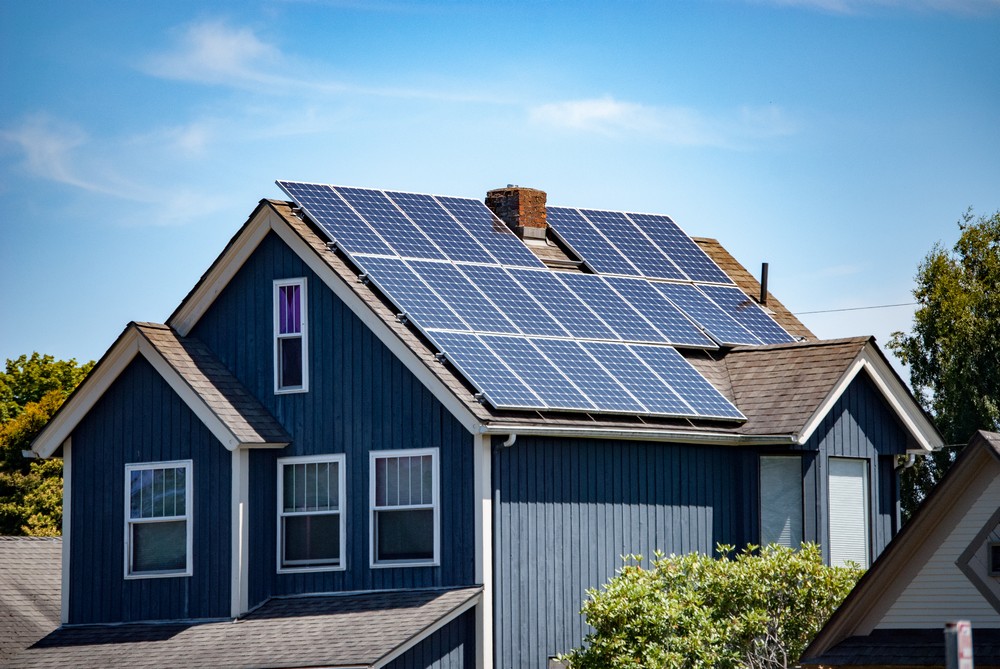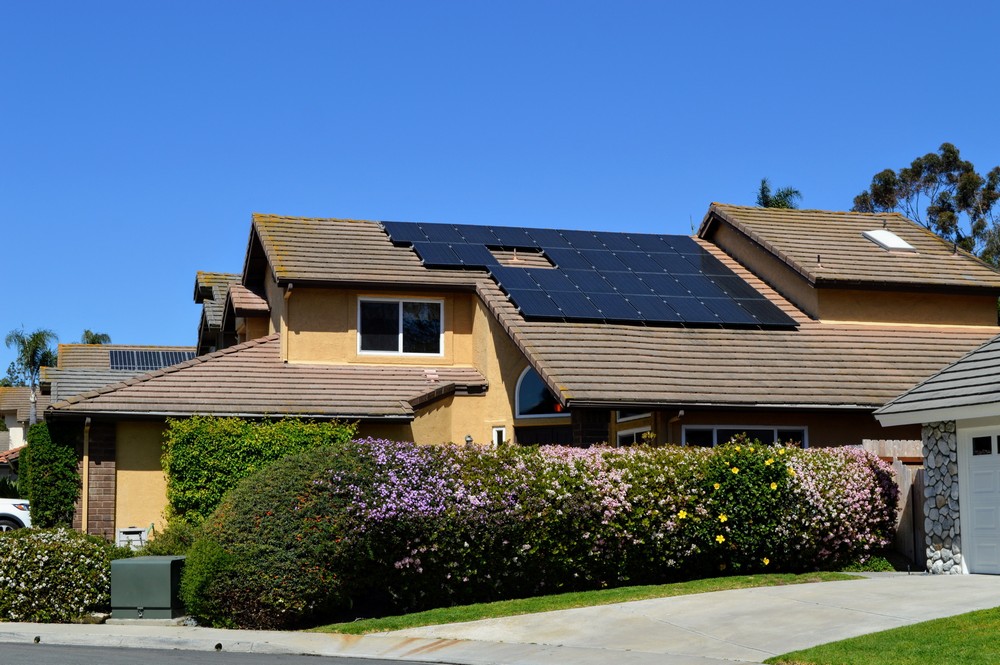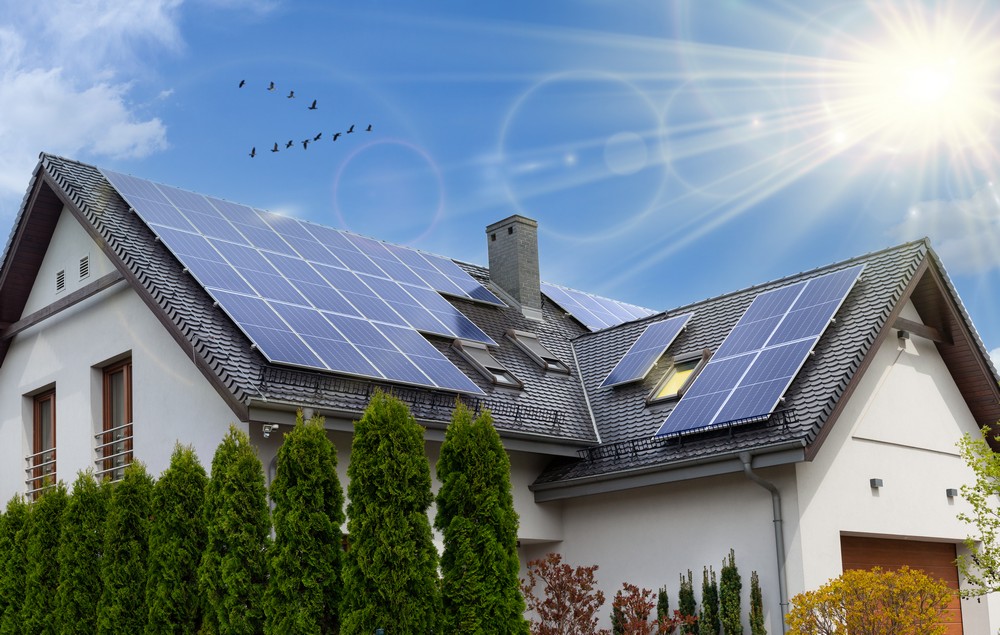- 8901 228th St., Kent, WA 98031
Pacific Northwest Leading Installer of Residential Generators.

We are a certified solar installer for SunPower. With that in mind, we can assess your roof’s solar potential with a custom quote that analyzes your energy usage and your potential savings. We will ask you for some energy data from your power bill that helps give us a granular detail of whether solar is a good fit for your home.
Our proposals include the expected design and layout of the solar panels on your roof. These designs focus on maximizing the value of purchasing solar panels for your home and offsetting your current energy usage. The proposal will also include the type of equipment that will be installed on your roof such as model of panel, inverters, battery storage system, and the monitoring system (if purchased).
With our site visit, we can see what other items will be needed with your solar installation. This can include upgraded electrical panels or additional work to make your solar installation go smoothly.
As you decide to move forward with your solar installation, we will work with SunPower’s solar system designers to finalize your plan and get the required materials on order. All the aspects of your system follow National Electric Code, local electrical code requirements, and fire safety requirements.
While we get a tentative start date scheduled with you, we are working on the other requirements with the power company, your city or jurisdiction, and permit applications. If you are eligible for net metering, most of our customers are if they are new solar owners, we will handle the application process to get you qualified for net metering. The application process for net metering can take up to 30 days to complete.
Depending on the scale of the solar project, some cities or jurisdictions may require additional designs and permitting. These additional steps vary depending on the city.


Our solar installations typically take 2-4 days depending on the complexity of your project. The crew will consist of an electrician and at least one roof technician. Our lead installer will meet with you onsite to go over expectations and the daily plan onsite for your project.
The crew will need access to your electrical panel during the project as we are installing your battery system, as well. Many people ask if it will be too loud during the project due to us installing on the roof, there will be some noise, but it will not be as loud in comparison to getting your roof replaced. Also, if we are making any needed panel upgrades or expanding your battery system, you will experience intermittent power outages at your home as our electricians make the needed changes to your panel in the safest way possible.
We will handle the scheduling of inspections for you during the installation of your new solar panels with the permits we acquired before the start of your project. Typically, your electrical inspection will occur after our technicians have completed the installation.
Upon completion of the work, one of the installers will show you how to operate the transfer switches and the rest of the system essentials.


We are a certified solar installer for SunPower. With that in mind, we can assess your roof’s solar potential with a custom quote that analyzes your energy usage and your potential savings. We will ask you for some energy data from your power bill that helps give us a granular detail of whether solar is a good fit for your home.
Our proposals include the expected design and layout of the solar panels on your roof. These designs focus on maximizing the value of purchasing solar panels for your home and offsetting your current energy usage. The proposal will also include the type of equipment that will be installed on your roof such as model of panel, inverters, battery storage system, and the monitoring system (if purchased).
With our site visit, we can see what other items will be needed with your solar installation. This can include upgraded electrical panels or additional work to make your solar installation go smoothly.

As you decide to move forward with your solar installation, we will work with SunPower’s solar system designers to finalize your plan and get the required materials on order. All the aspects of your system follow National Electric Code, local electrical code requirements, and fire safety requirements.
While we get a tentative start date scheduled with you, we are working on the other requirements with the power company, your city or jurisdiction, and permit applications. If you are eligible for net metering, most of our customers are if they are new solar owners, we will handle the application process to get you qualified for net metering. The application process for net metering can take up to 30 days to complete.
Depending on the scale of the solar project, some cities or jurisdictions may require additional designs and permitting. These additional steps vary depending on the city.

Our solar installations typically take 2-4 days depending on the complexity of your project. The crew will consist of an electrician and at least one roof technician. Our lead installer will meet with you onsite to go over expectations and the daily plan onsite for your project.
The crew will need access to your electrical panel during the project as we are installing your battery system, as well. Many people ask if it will be too loud during the project due to us installing on the roof, there will be some noise, but it will not be as loud in comparison to getting your roof replaced. Also, if we are making any needed panel upgrades or expanding your battery system, you will experience intermittent power outages at your home as our electricians make the needed changes to your panel in the safest way possible.
We will handle the scheduling of inspections for you during the installation of your new solar panels with the permits we acquired before the start of your project. Typically, your electrical inspection will occur after our technicians have completed the installation.
Upon completion of the work, one of the installers will show you how to operate the transfer switches and the rest of the system essentials.

"*" indicates required fields